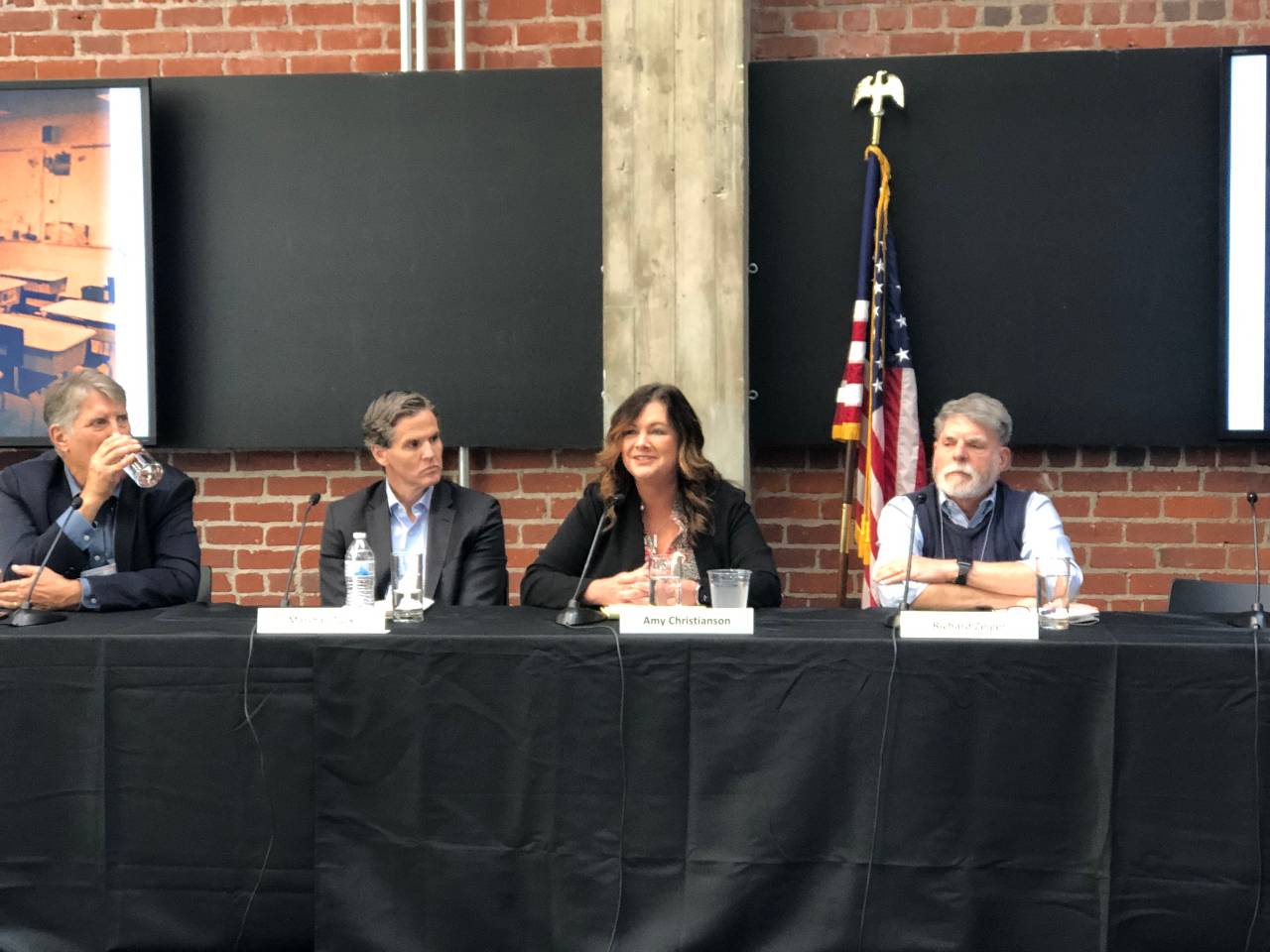On Nov. 7, Capitol Weekly hosted a conference on education policy featuring a panel on the role of school boards. CSBA Member Services Chief Amy Christianson shared the stage with Marshall Tuck, CEO of EdVoice; Richard Zeiger, founder of Zeiger Strategies and former California Chief Deputy State Superintendent of Public Instruction; and moderator Dan Morain of Capitol Weekly. The Q&A-style panel touched on topics such as the board’s role in supporting public education, Assembly Bill 1078 and recent issues between certain school boards and the state.
Christianson kicked off the panel with a statement of why school boards are important. “School boards are the largest body of elected officials at the closest grassroots level to public education,” she said. “They provide governance and accountability oversight for millions of California students. They have the responsibility to set the direction; to identify policy, practices and bylaws they follow based on education code; they provide support to the superintendent and others who manage the day-to-day operation of schools; and they provide the opportunity for the public to engage in ensuring that local schools are implementing the value and vision and meeting the needs of the children in their community.”
Morain asked about incidents this year in which boards and the state were at odds due to policies related to LGBTQ students, especially transgender students. Instead of focusing on any one school board, Christianson spoke further about the responsibilities of boards of education and how, by following the law, they can avoid issues with the state.
“In addition to the responsibility to govern based on policies, procedures and guidance outlined in ed code, school boards have a responsibility to ensure that there is an equitable education provided for all students,” Christianson said. “There are guidelines for curriculum adoption. There are practices in place for the community to engage in conversations about what is in textbooks, there are opportunities for teachers to play a strong role in what’s in the textbooks, there is a place for board members to go through an adoption process — and if we are following the policies and bylaws and guidance that CSBA has outlined in numerous publications, then some boards would not be in the current place that they are in.”
Tuck spoke about the importance of diversity in curriculum and his support for state intervention if California’s laws about inclusivity in curriculum are not followed. “Children learn when they are believed in, when they feel relevant, when they are loved. When you see yourself in the curriculum, it’s more likely you will learn and find out who you are and build that confidence to be successful,” he said. “Now, it’s not very many districts in the state, but if a local district is making a decision that might make a child not feel safe about their identity or prevents a child from seeing their identity in their textbooks, the state needs to step in.”
Zeiger agreed. “CDE is doing what it should be doing, which is acting on behalf of state policy to take care of the curriculum and the way kids are being educated,” he said.
Zeiger talked about how school boards have changed since the implementation of Proposition 13. He said that when districts were permitted to raise their own funds, “that created, from a systemic point of view, the right balance of the people raising the money are spending the money.” When the state took over the funding of schools and they became allocators. “That diminished the authority of school boards. Over the years, the state slowly increased its control over content.”
Christianson explained CSBA’s Oppose position to Assembly Bill 1078, citing its unintended consequences on board’s ability to select instructional materials by making it “harder to address insufficiency.” She cited processes already in place to address concerns over instructional materials like the Williams Act, which requires sufficiency to happen by the second month of school and requires a resolution stating they have sufficient textbooks or providing the plan to secure them.
Panelists talked about the major challenge facing public education now — providing an equitable education for all students. “We have a system that does not work for minority and low-income kids, who are disproportionately Black and Latino,” said Tuck. “If you look at test scores, at graduation rates, there are large gaps that have been in place a long time.” He said a continued focus on early learning, especially on effective reading techniques, and a direct focus on lifting up children from low-income communities could help.
Christianson talked about the importance of boards using data to analyze students’ progress and using that data to target interventions “by working through partnerships with the county office and organizations like CCEE [California Collaborative on Educational Excellence] to look at continuous improvement for all students.” “The next step is establishing the structure — the policies and practices that govern how the board moves forward and how they make decisions — and make the public aware of that so we can truly engage at the local level,” Christianson added.
Zeiger, a self-described “systems kind-of guy,” said a major issue is the fragmented nature of California’s education system. “We’re pretty good at identifying where the problems are and the changes we need to make to get things better,” he said. “The problem is, how do you do it? The system is so fragmented. School boards can’t create the resources to meet the challenges. So, you have to go to the state to create the resources, and with that comes more oversight.”
Christianson acknowledged the work CCEE is doing in taking the research and working with districts on getting to the root of issues. She said one way to start to address these issues is by highlighting what is working in schools and using tools like the Local Control and Accountability Plan to engage parents and the community in supporting the success of students. “There are schools and districts that are high poverty that are experiencing success,” she said. “We need to learn from one another. And we need to demonstrate leadership. We need to stand firm and united as a board to talk to the public that elected us and let them know what is happening in schools — both the good things and the challenges.”




